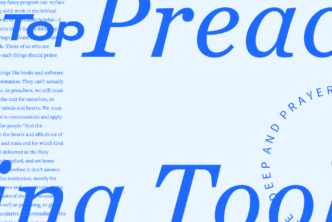The Logos syntax databases and resources have revolutionized advanced searching and analysis of the Old and New Testaments in their original languages. As with most powerful tools, there is a bit of a learning curve to using them effectively. One of the best ways to learn how to use them is to reproduce the searches of others. This is easiest to do by seeing a series of screenshots or watching a video.
Learn by Example
To help you learn the ropes, we continue to provide you with blog posts and videos that discuss and demonstrate syntax searching. If you haven’t been over to the video tutorial page at Logos.com recently, there are dozens of syntax videos that you can watch. I just updated it to include all of the syntax-related videos that have appeared here on the blog, so go take a look! If you have a slow internet connection, you may want to purchase the Syntax Demonstration Videos on CD-ROM.
Work Backwards
Another great way to learn how to perform syntax searches is to work backwards from one of the syntax resources.
- The Hebrew Bible: Andersen-Forbes Phrase Marker Analysis
- The OpenText.org Syntactically Analyzed Greek New Testament: Clause Analysis
- The Lexham Syntactic Greek New Testament: Sentence Analysis
This is the method I used to perform my first successful syntax search (i.e., the Holy Spirit communicating). I (1) found a passage of Scripture that had something I wanted to search for (Acts 13:2), (2) looked up that passage in the OpenText.org Clause Analysis resource, and (3) reproduced it in the syntax search. This method will involve some trial and error, so most users will want to watch several of the demo videos before trying this.
Show Us Your Syntax Searches
We love to see the ways you are putting the syntax tools to use. I stumbled across a blog post where one of our users creatively used the Anderson-Forbes Syntax database to locate all of the occurrences of bears in the Old Testament. His search missed one (Pr 17:12, where the gloss was “she-bear” rather than “bear”), but it was an excellent example of how syntax searching can be a very quick and simple way to access a list of data that would have taken longer to find with an English search or a combination of Hebrew and Aramaic morphology searches. Nice work, Mike!
If you blog about creative ways to use the syntax resources, send an email to blog@logos.com and let us know. We’ll add a link to your post below. If we think it’s really cool, we may even take a whole post to show off your syntax skills! Just a hint: it should probably contain screenshots or video. (Check out Jing if you don’t know how to capture video on your screen.) We’re looking forward to seeing what you’ve got!




